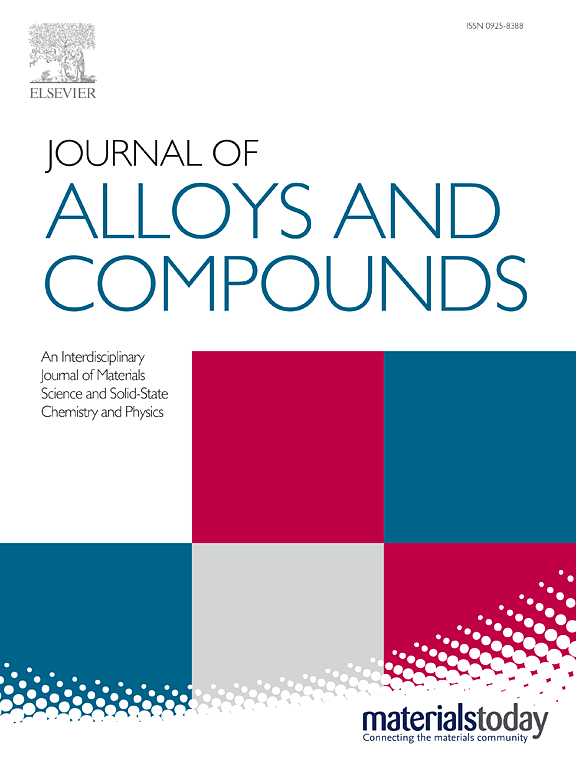双卤化物钙钛矿异质结与分子钴催化剂耦合实现高效CO2光还原
IF 5.8
2区 材料科学
Q2 CHEMISTRY, PHYSICAL
引用次数: 0
摘要
传统化石燃料的过度燃烧导致了严重的全球变暖,主要原因是二氧化碳(CO2)排放量的增加,同时也引发了能源危机。光催化将二氧化碳转化为燃料是缓解这些问题的最有希望的策略之一。在本研究中,利用无铅卤化物钙钛矿Cs2AgBiBr6(CABB)和Cs2PdBr6(CPB)构建异质结构,其中酞菁钴(CoPc)通过氨基键固定在卤化物钙钛矿上。该CoPc@CABB/CPB体系的CO产率为164µmol·g−1,是纯CABB的3.8倍,超过了大多数报道的CABB基光催化剂的性能。与CPB形成异质结显著提高了电荷分离效率和CO2还原效率。将CoPc的氨基精确锚定在Br上,提高了光吸收能力,从而增强了光催化CO2还原能力。本研究提出了一种高效、环保的钙钛矿基光催化剂二氧化碳还原方法。本文章由计算机程序翻译,如有差异,请以英文原文为准。
Double Halide Perovskite Heterojunction Coupled with Molecular Cobalt Catalyst Achieves Highly Efficient CO2 Photoreduction
The excessive combustion of traditional fossil fuels has led to severe global warming, primarily due to increased carbon dioxide (CO2) emissions, and has also triggered an energy crisis. Photocatalytic conversion of CO2 into fuel is emerging as one of the most promising strategies for mitigating these issues. In this study, lead-free halide perovskites Cs2AgBiBr6(CABB) and Cs2PdBr6(CPB) were utilized to construct a heterostructure, where cobalt phthalocyanine (CoPc) was anchored onto halide perovskites through an amino group linkage. This CoPc@CABB/CPB system achieved a CO yield of 164 µmol·g−1, which is 3.8 times higher than that of pure CABB and surpasses the performance of most reported CABB-based photocatalysts. The formation of a heterojunction with CPB significantly improved charge separation efficiency and CO2 reduction efficiency. Precise anchoring of the amino group of CoPc to Br improved light absorption capacity, thereby enhancing photocatalytic CO2 reduction capacity. This work presents an efficient and environmentally friendly approach for CO2 reduction using perovskite-based photocatalysts.
求助全文
通过发布文献求助,成功后即可免费获取论文全文。
去求助
来源期刊

Journal of Alloys and Compounds
工程技术-材料科学:综合
CiteScore
11.10
自引率
14.50%
发文量
5146
审稿时长
67 days
期刊介绍:
The Journal of Alloys and Compounds is intended to serve as an international medium for the publication of work on solid materials comprising compounds as well as alloys. Its great strength lies in the diversity of discipline which it encompasses, drawing together results from materials science, solid-state chemistry and physics.
 求助内容:
求助内容: 应助结果提醒方式:
应助结果提醒方式:


